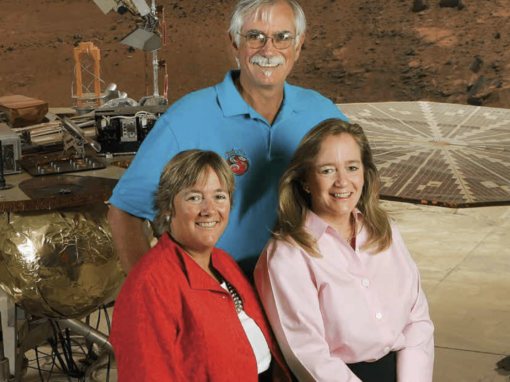Product Development
Digital Disruption: Evolve or dieStanding still is no longer an option. With virtually everything becoming a commodity, customer experience is the last frontier in market differentiation. Brands must continually listen to customers and anticipate their next wants and needs. If you don’t, your competitor will.
listening to customers to deliver what they wanted: Solar energy
TEP was recognized by the Solar Electric Power Association (SEPA) as the 2012 Investor Owned Utility (IOU) of the Year.
TEP formed strategic partnerships with industry and researchers to develop utility-scale solar farms built by several solar developers using different technologies. It’s now one of the world’s largest solar sites.
Responding to the voice of the customer was the only option for an industry in flux.
“We placed a lot of emphasis on developing solar energy programs and strategies that are achievable and cost-effective for our customers. It’s that kind of innovation that will help this company to achieve future success,” CEO Dave Hutchens said.




Case Study: Agriculture Product Development
Boron is a micronutrient that is essential to plant growth. Adequate boron is necessary for proper absorption of macronutrients.
Although Boron is a naturally occurring element, boron deficiencies are common. Overfarming, extremely hot or cold conditions, drought, an overabundance of rainfall or irrigation, sandy soils—all these factors can reduce the amount of boron available to crops.
By 2050, the global population is expected to hit nearly 10 billion. But by 2040, the world will have run out of land available for crops and grazing.
These predictions make the challenges of global population growth all too real. To meet those challenges and truly feed the world, agriculture must be increasingly efficient in the way it uses resources, science, and technology.
Pioneering Resources and Research for the Future of Food Production
Fortunately, developments in science and technology support increasing efficiencies and offer new opportunities in food production. We’re learning more about the importance of micronutrients such as boron—and how to target those micronutrients to enhance the effectiveness of fertilizers.
Brightsave Home Radio Spot 1
Brightsave Home radio spot 2
Case Study: BrightSave Home Energy Program
A sustainable energy future requires more than flipping the switch to renewable energy. It’s also important to educate the public about how they consume electricity and ways they can reduce their carbon footprint through changes in behavior and other conservation measures.
The campaign was themed around Gabe, a likable energy expert who had so many bright ideas a light bulb hovered above his head. This off-putting visual element gave a little spunk to an otherwise pedestrian topic.
Promoting energy efficiency is one tactic policymakers have used to help utilities postpone the need to build costly – both financially and environmentally – fossil-fueled power plants.
In response, I was part of the Tucson Electric Power team of engineers and marketers who developed the BrightSave Home energy efficiency (EE) programs, supported by the Arizona Corporation Commission and the U.S. Department of Energy.
TEP had already achieved nationally recognized success through its energy smart new homes through partnerships with local and national builders. The goal of BrightSave was to help homeowners learn how making low-cost to moderate upgrades to their existing homes could bring significant energy savings.
Advertising included TV, print, radio and social. The campaign was themed around Gabe, a likeable energy expert who had so many bright ideas a light bulb hovered above his head. This off-putting visual element gave a little spunk to an otherwise pedestrian topic.
Case Study: TEP named Solar Utility of the Year
The Bright Tucson Community Solar Program offers an easy and affordable way to meet your electric needs with locally generated solar power. TEP customers can purchase solar power in “blocks” of 150 kilowatt hours (kWh) per month. You can buy some or all of your power through the program, offsetting the need for energy from conventional resources.
The first allotment of solar blocks sold out in a few weeks, well before the anticipated date, and helped TEP win Solar Utility of the Year.


John C. Brown
Marketing Communications Consultant
Get In Touch

